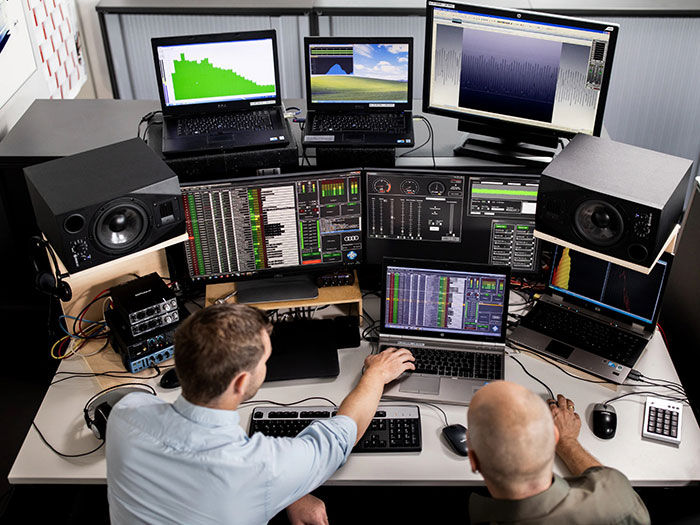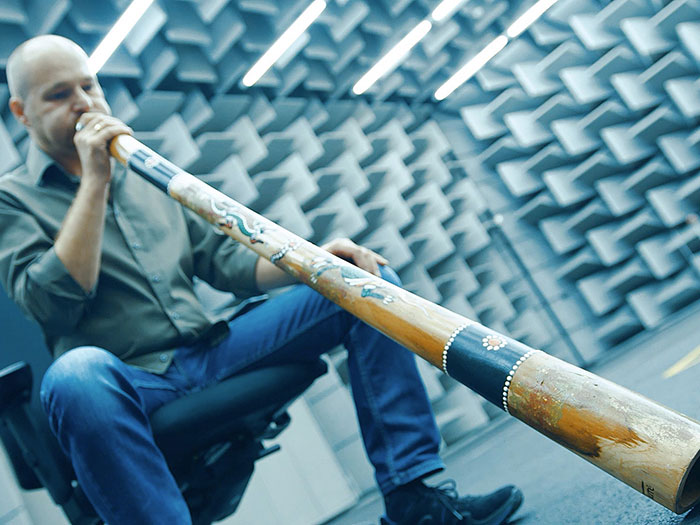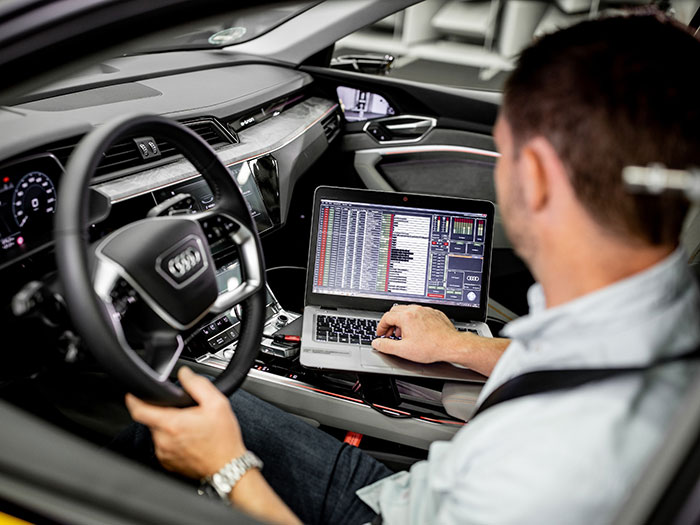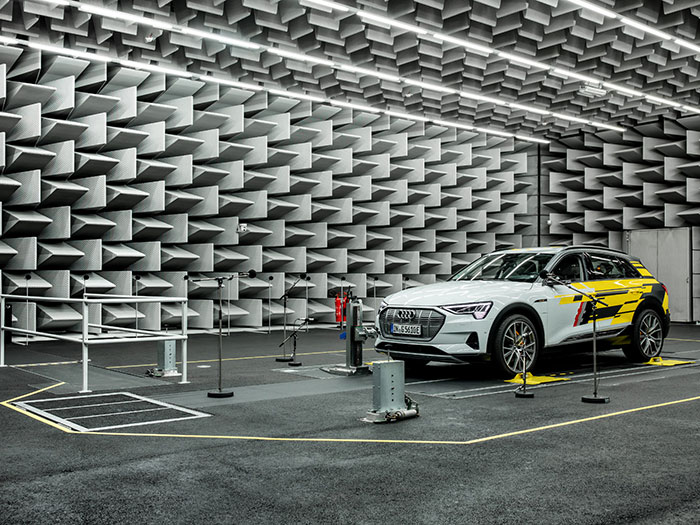A recording studio to give a voice to electric cars
All new electric and hybrid cars must emit an artificial sound: here is how it is created and how it can signal the vehicle’s movements, according to Audi.

The desk of an Audi sound designer is not too different from that of someone who works for a rock star: laptops, screens, speakers, mixers, amplifiers and cables in every colour, next to musical instruments of all kinds. You could more or less call it a recording studio: this is the place where Audi is experimenting with sounds, in order to decide on the ones that the e-tron and upcoming Audi electric models will have to emit while moving.
So it should not come as a surprise to find a gas pedal and a speaker on the desk: these allow, respectively, the speed of the e-tron to be virtually increased and the corresponding sound to be heard in real time while all frequencies are displayed on the monitor.
Instrumental experimentation

The Audi technicians have created the equipment with their own hands, as when they began to work on this kind of sound, there was not yet a suitable interface available on the market.
Rudi Halbmeir has been responsible for the acoustics in the Audi models since 2009. He is a mechanical engineer with a passion for music: “I play seven instruments and have a sound studio at home”. Over the last ten years he has built a database with over 100 sounds, which range from the completely artificial to recordings of real traffic. It is a case of experimenting, using the instruments in an unconventional way and mixing the sounds.
Warning and communicating
In order to create the perfect “noise” for the Audi e-tron, they started out from the requirements of EU regulations. Whatever environment it is in, an electric car must draw attention to its presence by emitting a sound which is clearly audible up to a speed of 20 km/h (31 km/h in the US). The purpose of this is to signal to pedestrians and cyclists that a car is approaching, accelerating, or braking.
This information is not only provided via the volume, but also with changes to the sound as the speed increases. The brain quickly labels monotonous, unchanging noise as normal background noise, meaning that the sound from a car must change, but without becoming annoying or unpleasant.
Frequency and volume

It is not simple to find the right mix of frequency and volume: the decisive factor is the choice of tones. “It’s almost like composing a symphony,” explains Halbmeir; “the Audi e-tron’s external sound is created from over 30 different sound recordings which are layered on top of each other. Fifteen of these are always playing, at any time. I call this type of sound “realistic-technical”, it must not be too harmonic, otherwise people won’t be consciously aware of the sound.”
The tests are also performed with a real vehicle in the sound lab, because the speakers are different and the sound changes when it comes out of the car. The lab is a semi-anechoic chamber: the room reflects almost no sound from the ceiling and the walls, but has a normal, sound-reflecting asphalt floor.
Different regulations

In the Audi e-tron, the sound is generated by a small speaker located in front of the right front wheel, and the volume increases when the vehicle drives backward or faster. It has been designed not only to satisfy legal requirements, but also and above all to be pleasant on the ears and immediately recognisable as an Audi. In any case, it is nothing like the sound of a combustion engine car. Interestingly, due to the different regulations, the sound is the same in Europe and China, while it is different for vehicles destined for the USA.
“It’s funny,” Halbmeir concludes, “it used to be my job to make the cars as quiet as possible. Now I have to make them louder with artificial sounds.”
Source: AUDI AG
